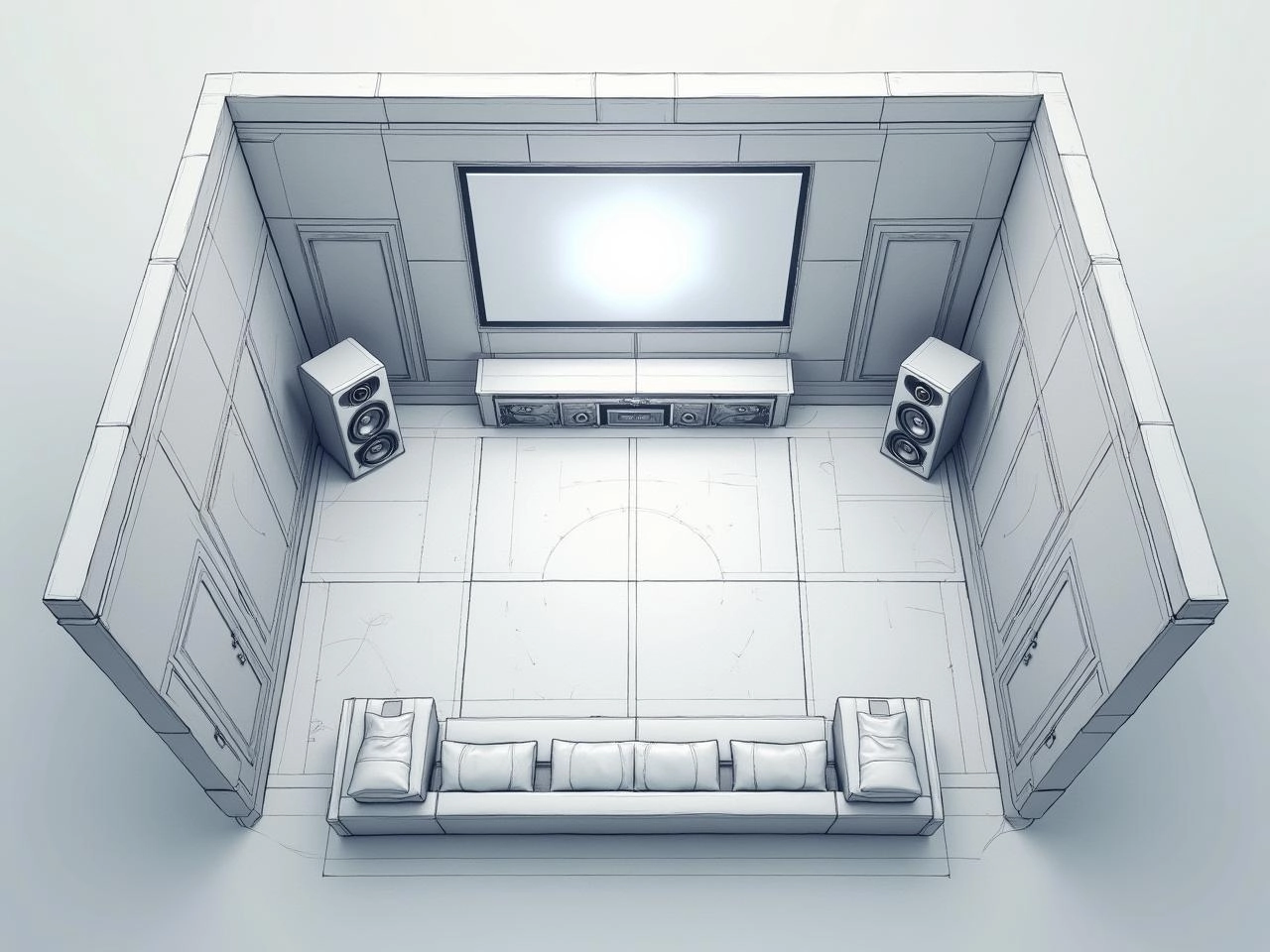n multi-speaker and home theatre configurations (5.1, 7.1, etc.), isolation mats must be strategically positioned to address the unique vibration profile of each component. The goal is to maximize channel separation and prevent sympathetic resonance, which is where one speaker’s energy excites another component. Focusing isolation on the highest-energy and most critical channels yields the greatest performance gains .
Prioritizing High-Energy and Critical Components
Not all speakers or components require the same level of isolation. Resource prioritization should focus on components that either produce or are most sensitive to mechanical energy.
Subwoofers: The Low-Frequency Anchor
Subwoofers are the single greatest source of structure-borne energy. Proper isolation is non-negotiable for low-frequency clarity.
- Best Practice: Use a dedicated, oversized isolation mat or foundation directly under the subwoofer. The mat must fully decouple the enclosure from the floor to prevent the floor from acting as a secondary, uncontrolled radiator “. This tightens bass response and eliminates “boom.”
Center Channel: The Dialogue Backbone
The center channel handles 70% of dialogue and is crucial for intelligibility. It is often placed on top of a media cabinet, which is a significant source of unwanted resonance.
- Best Practice: Place an isolation mat directly under the center speaker and a second mat under any critical source components (e.g., AV receiver, disc player) sitting in the same cabinet to eliminate crosstalk.
Placement in the Listening Triangle
For front left and right main speakers and surround speakers, consistency is key. Ensure all speakers of the same type (e.g., all bookshelf monitors) receive the same isolation treatment (e.g., identical footers or mats) to maintain a cohesive soundstage and prevent phase issues.
| Speaker Type | Isolation Goal | Recommended Mat Placement |
| Subwoofer | Decoupling/Bass Clarity | Full-sized foundation mat beneath the entire enclosure. |
| Tower Speaker | Cabinet Resonance Control | 3 or 4 isolation footers placed at the base, directly under weight-bearing points. |
| Bookshelf/Monitor | Stability/Decoupling | Full isolation mat placed on the stand’s top plate. |
| Source Components (e.g., Turntable) | Internal Vibration Shield | Four isolation footers or a small foundation mat under the component’s chassis. |
Q&A on Positioning
Q: Should I use three footers or four under a speaker? A: Generally, three footers provide a stable, non-rocking, and easily balanced mechanical connection, guaranteeing that all three contact points bear weight equally. Four can sometimes lead to uneven loading on non-perfect surfaces.
Q: Do isolation mats help with vibration coming from my neighbors downstairs? A: Yes. Isolation materials effectively work in both directions, dampening vibrations entering the component from the floor (e.g., neighbor noise) and dampening vibrations leaving the component to the floor (e.g., your subwoofer noise) .
